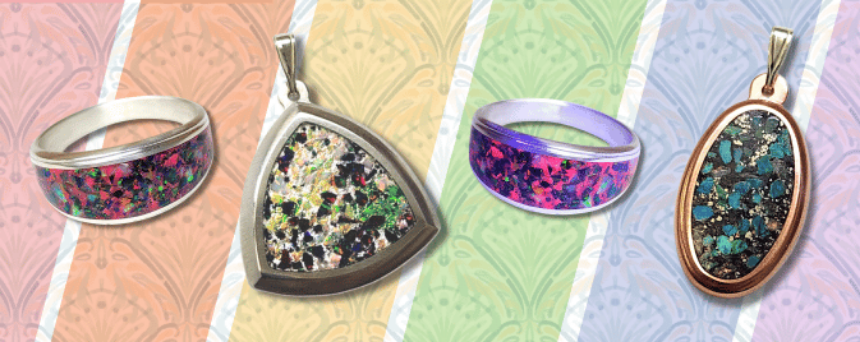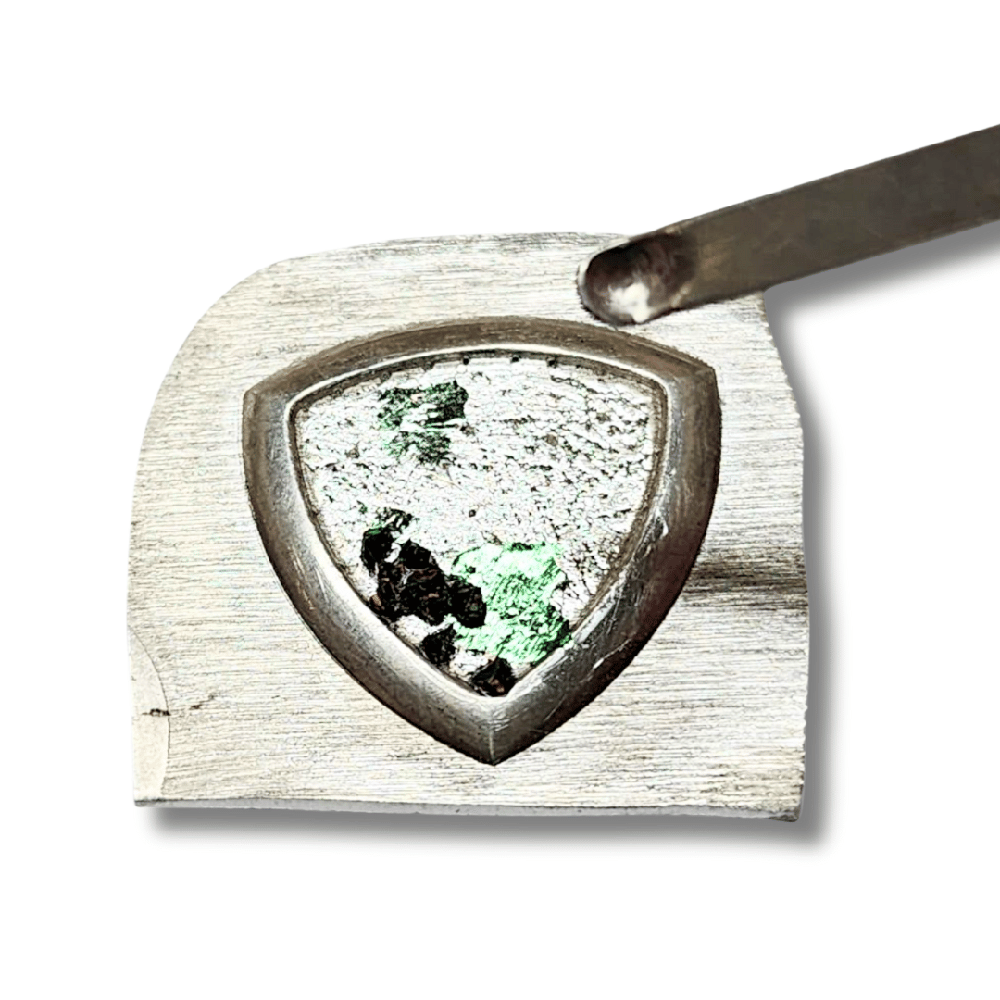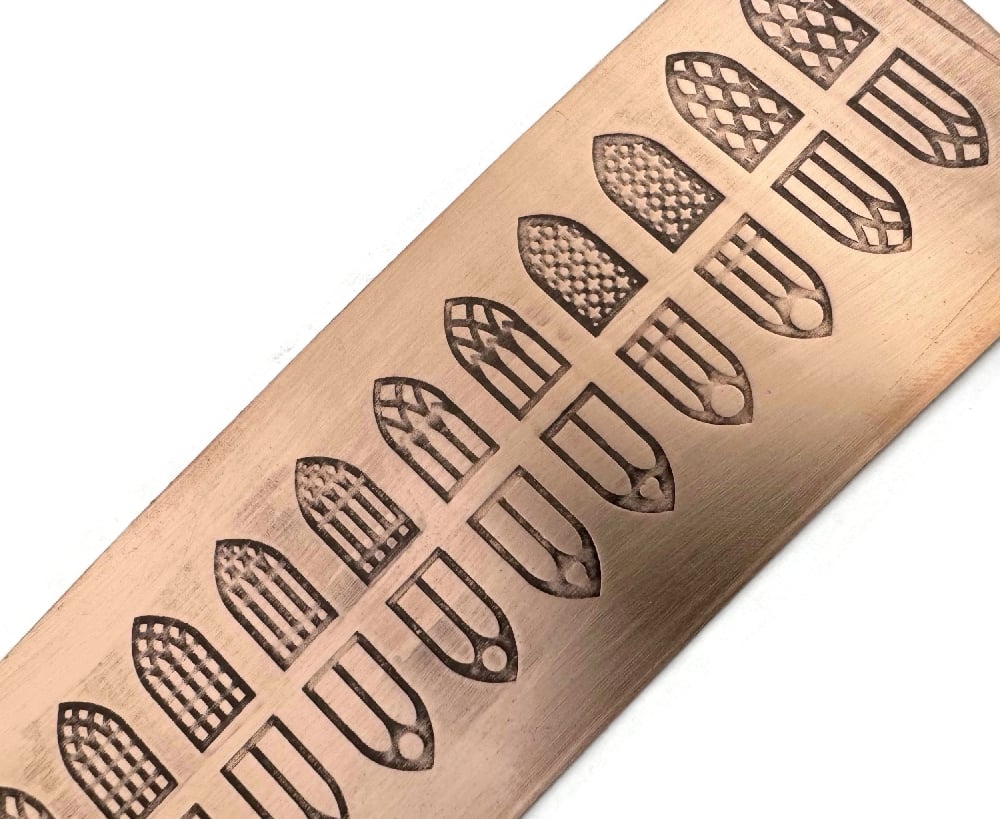
Inlay is one of the most captivating techniques in metalwork—a true fusion of precision, artistry, and patience. Whether you’re just beginning your metalsmithing journey or looking to refine your skills, inlay can take your designs to the next level. At Potter USA, we’re proud to offer not just the tools, but the education and inspiration to help you master inlay techniques from start to finish.
What Is Inlay?
Inlay is the process of embedding one material into another to create a decorative surface. In metalworking, this often involves cutting precise channels or patterns in a metal base and filling them with contrasting metals, stones, resin, enamel, or even wood. The result is a beautifully detailed piece that feels both luxurious and handmade.

Types of Inlay Techniques
There are several inlay methods that jewelers and metalsmiths use, varying based on desired look and materials:
Wire Inlay: This techniques involves using gravers to carve a channel into a base metal (such as sterling or copper) and hammering in a softer or contrasting metal like 24k gold or fine silver.
Solder Inlay: This method involves flooding the recessed areas of patterned metal with solder and sanding the excess away to create a two-toned effect. Check out our solder inlay demo video to get a sense of what this looks like.
Stone Inlay: Perhaps the most recognizable inlay method, stone inlay uses crushed or cabbed stones like turquoise, lapis, and coral, places them into a recessed design, and seals them with resin or glue.You can learn all about Chip Inlay and how to combine it with impression dies here.
Enamel Inlay (Champlevé): A complex technique where recessed areas are filled with vitreous enamel and then fired in a kiln or with a torch, often ground flush, resulting in colorful and glossy details.
Resin Inlay: A more modern and accessible inlay technique where colored resin is poured into channels and then sanded flush for a vibrant, glassy finish.
Inlaying Metal into Wood: Requiring a knowledge of both metalsmithing and carpentry, wood inlay creates elegant, rustic jewelry designs. For this type of inlay, the shape of the wood comes first and the metal comes second. Channels and troughs are carved into the wood, then soft metal is formed into the wood to create decorative details.
Each type of inlay brings a unique feel to your work—and we carry the tools and dies you need for every approach.
Best Tools for Inlay
When it comes to inlay, clean, crisp lines are non-negotiable. That’s where our Bezel Dies, Pancake Dies, Rolling Mill Pattern Plates, FSS Dies, and Impression Dies shine.
Bezel Dies: Our unique bezel dies allow you to make your own bezels quick and easy—but nobody said you have to use them to set a stone! These are a great option for stone, resin, or wood inlay.
Pancake Dies: Ideal for creating repeatable shapes that can be used for both base pieces and overlays. Our endless catalogue of pancake dies includes shapes of varying sizes, giving you near free-reign over the space you create for your inlay.
FSS Dies: We only offer these on an occasional basis, but our Fast Stamping System allows you to use two sizes of the same design to make, essentially, a washer into which you can inlay stone, resin, and more.

Pattern Plates: Depending on where you get your pattern plates and the design you purchase, the depth of your pattern will certainly vary. Deeper patterns will more easily lend themselves to inlaying, but even Potter USA's thinnest pattern plates are great for thinner inlay techniques like solder inlay.
Impression Dies: Impression dies come in all shapes and sizes, so their uses are endless! Many of our antique die hubs feature recessed designs that naturally lend themselves to a stone, resin, or enamel inlay- like floral or geometric mandalas, enamel buttons, filigree pieces, southwest styles, and especially our enamel and inlay rings. Look for dies with recessed designs of at least 1/16” in depth (if the recess is shallower, our Podia class will show you how to modify your stamping!). Here are a couple of our favorite impression dies for inlay! We suggest you choose dies with open spaces, channels, or lines that make great recesses for stone inlay.
Learn from the Pros
We believe the best way to learn inlay is through guided practice—and we’ve made that easier than ever through our free and pay-to-learn courses and demos.
Our Chip Inlay Online Class is designed for beginners and intermediate makers alike. You’ll learn everything from design planning and tool selection to metal carving, material application, and polishing. It's taught by Potter USA’s seasoned jeweling instructors and includes lifetime access.
Not ready to commit to a class? We’ve got you covered! Check out our free jewelry demos on our YouTube channel, where our in-house jewelers walk you through real-time projects, troubleshoot common issues, and share insider tips.
.png)
We’re also spotlighting incredible inlay pieces created by our team members, who use the same tools and techniques available in our shop. Their work is a testament to what’s possible when you have the right resources, training, and a spark of creativity.
Follow us on Instagram and join our Potter People community to see these featured designs, ask questions, and share your own inlay journey.
Whether you’re just getting started or looking to add a new skill to your toolbox, Potter USA has what you need. With cutting-edge tools and expert instruction, we’re here to help you bring your most intricate designs to life.
Ready to try inlay for yourself? Shop our curated tools and sign up for the online class today!

